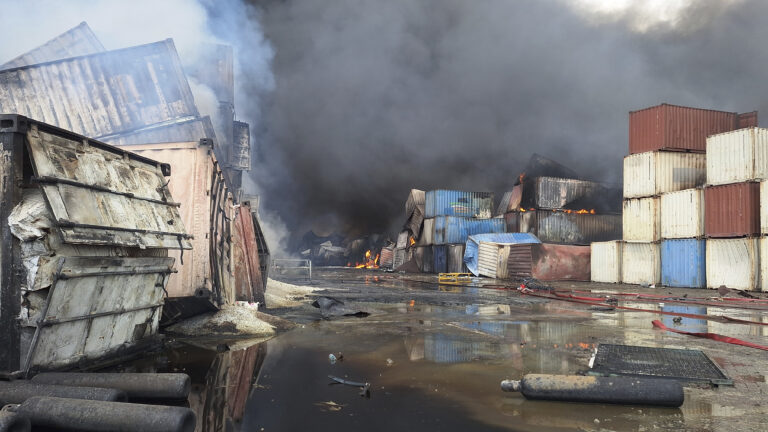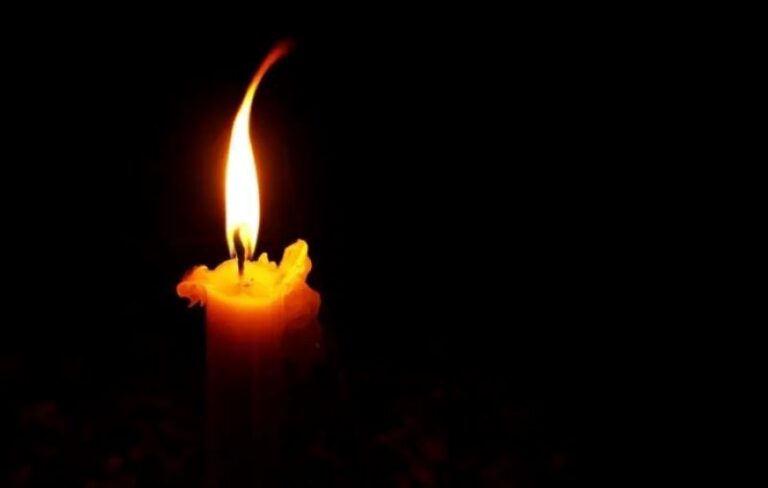
[Halachically Speaking appears on YWN weekly, Tuesdays and Thursdays]
Written by Rabbi Moishe Dovid Lebovits of KOF-K Kosher Supervisio
One of the most common areas of halacha which people have different customs is in regard to drinking cholov stam. What is cholov stam? How is cholov Yisroel made? Do government regulations permit the drinking of non-Jewish milk? Do those who are stringent have to be concerned when a product is made on dairy equipment? Does a married woman have to follow her husband’s custom? In this issue we will discuss the many halachos which apply to this topic.
Milk Made by a Non-Jew
Chazal made a gezeirah that any milk which is milked by a non-Jew is forbidden to drink.[1] There is no concern that the non-Jew may[2]switch the kosher milk with non-kosher milk, since one can easily tell the difference between the two, rather the concern is that some non-kosher milk may be mixed into the kosher milk.[3] Milk which is not under a Jews supervision is called cholov akum.
Side Effects from Non-Kosher Milk
Many poskim say that cholov akum,[4] or other milk which was not properly supervised[5] are included in items which stuff up one’s heart (spiritually).[6]
Jew Looking at the Production
If a Jew saw the production of the milk then the milk is considered cholov yisroel.[7] The Jew also has to make sure that the container used is not the same one used for non-kosher milk.[8] In addition, if the Jew comes in and out of the room during the milking process, the milk is also considered cholov yisroel,[9] since the non-Jew expects the Jew to come in at any time he would be scared to mix in any non-kosher milk.[10] Additionally, a non-Jew has to understand that the milk is for the Jew, and non–kosher milk may not be mixed intokosher milk.[11]
Sitting outside
B’dieved if the Jew did not see the whole beginning and end, [12] or the Jew did not see the utensil[13] it is still considered cholov yisroelas long as he was sitting outside.[14] However, this is only if there is no non-kosher milk in the plant.[15] A Jew who came at the end of the milking has not made the milk cholov yisroel.[16]
If there is non-kosher milk in the plant the Jew must be able to see the milking process. However, if the Jew sits outside in a manner that he would be able to see the milking if he stood up then it is considered cholov yisroel.[17]
The reason less of a watching is required if we know that no non-kosher milk is found in the facility, is because since there is no non-kosher milk present we are not concerned the non-Jew will mix in the other milk. However, the non-Jew may still exit the facility and get non-kosher milk. Therefore, we are lenient some what and do not require the Jew to see the actual milking, but we require him to sit outside and see that the non-Jew does not go anywhere.[18]
There is a well known opinion of the Pri Chadash[19] who maintains that there is no issue of cholov stam, when there is no non-koshermilk present in the entire city. This reasoning would also apply where non-kosher milk is more expensive or in higher demand thankosher milk. Nonetheless, most poskim disagree with this ruling,[20] and hold that since the gezeira was made that a Jew has to see the milking, if this is not met, the milk is not permitted. The Chochmas Adom[21] adds since the Rishonim and Achronim did not mention the opinion of the Pri Chadash it is a proof that his opinion was not accepted by them.
According to the opinion of the Chasam Sofer[22] even if one is certain that nothing was added to the milk one may not drink the milk. He reasons that once the gezeira was made it became like a custom and one can not retract it.
Who is considered a Shomer?
A small boy or girl is considered a watcher in this regard and if a young Jewish boy or girl watches the milking in any way, the milk is considered cholov yisroel.[23] The reason is because a non-Jew would still be scared to be seen mixing in non-kosher milk.[24] Someposkim say the minimum age for this child is nine years old.[25]
Government Regulations[26]
Aside from the opinion of the Pri Chadash, a very famous opinion of Harav Moshe Feinstein zt”l on this topic is the following: In a place where a government maintains strict restrictions and gives penalties[27] to those who mix other milk into cow’s milk it is considered as if the Jew is present at the time of the milking. Knowing is like seeing,[28] and we know the non-Jew is in fear of being caught altering the cow’s milk.[29] This milk which is produced under government control is commonly referred to as cholov stam.[30] Others disagree with this heter and maintain that even if there are government regulations and penalties it is not considered as if the Jew saw the milk, therefore, this milk is considered cholov stam and may not be consumed.[31] One of the reasons for the disagreement is because government regulations can not be considered as if the Jew was there at the milking. In addition, the government regulations may not create the same fright (mirses) as if a Jew was at the production.
Harav Moshe Feinstein zt”l said that although many frum Jews and Rabbonim are lenient, and G-D forbid to say that they are doing wrong,[32] a ba’al nefesh should be stringent. However, one who is lenient has what to rely on. [33] Harav Moshe Feinstein zt”l was stringent for himself.[34] Others say this was only said if you can not get cholov yisroel easily, but if cholov yisroel is available then one should buy it.[35] Based on this and other reasons, the custom in Eretz Yisroel is to be stringent since there is readily available cholov yisroel.[36]Nonetheless, the custom of many people (outside of Eretz Yisroel) is to rely on the opinion stated here.[37] It would seem that one who is lenient and goes to Eretz Yisroel to learn does not have to adopt their custom and refrain from eating cholov stam which he may have brought from America.
How Far does the above heter go?
It is very important to point out that the aforementioned heter of Harav Moshe Feinstein zt”l only applies to countries which have government regulations on the milk production. Countries that do not have this would not have the heter of Horav Moshe zt”l and one would not be able to consume non-supervised milk.[38] This was an issue that was raised in the Jewish community in South Africa since no one fears the government.[39] When traveling to this country or to similar destinations, one should contact the kashrus organizations in these locations.
Young Children and Women
According to some, one can be lenient in regard to cholov stam for young children and women within thirty days of giving birth.[40]However, many say one should avoid giving such milk to a child who does not need it.[41]
Giving to those who are Lenient
One who eats cholov stam is permitted to give cholov stam to a person who does not eat it (i.e. for Mishloach Manos).[42]
Non-Frum Jew
The custom is that one may drink milk from a cow that a non-frum Jew milked,[43] while the opinion of others is to be stringent.[44]
Powdered Milk
Most milk products are not made with regular milk, but they are made with milk which is turned into a powder, namely milk powder.[45] Such products include chocolate and baked goods. This is very relevant to those who hold of cholov yisroel and wish to eat such products.
Some poskim are lenient and permit powered milk even for those who are makpid on cholov yisroel.[46] One of the reasons is because thegezeira was on milk not milk powder. In Eretz Yisroel many were lenient to rely on the above opinion, but this has changed and thekashrus agencies now use powdered milk from cholov Yisroel sources.[47] L’maseh, many poskim feel that if one is makpid on cholov yisroelhe should be mapkid not to eat powered milk.[48]
Dairy Equipment
One who is careful to use cholov yisroel because he is machmir, can still eat foods which were cooked in non – cholov yisroel equipment.[49] One of the reasons is since the custom is to treat cholov stam as a chumra, the chumra was only said by drinking milk but not milk equipment.
What exactly does D.E. (Dairy Equipment) mean?[50]
The D.E. designation means that the kashrus agency has verified that the ingredients used in this product are all pareve. However, the product is produced using heat on equipment that is also used to produce hot products with dairy equipment without any koshering in between. The D.E. designation is not allowed unless the kashrus organization has verified that the company’s standard cleaning procedures are such that there is no concern that the residual dairy from a prior product might make the product in question dairy according to halacha.
Kashering
A utensil which had cholov stam in it has to be kashered with hagalah[51]before using the utensil for cholov yisroel.[52] The same would apply if the milk was sitting in a utensil for twenty four hours.[53]
While Traveling
When one is in a place where there is no cholov yisroel he can be lenient and drink cholov stam even if he is normally makpid on it.[54]Some say when going to a non-Jewish store to buy coffee and the store has cholov yisroel milk there, the Jew should make sure the non-Jew opens the milk in front of him, because the non-Jew may put in cholov stam.[55] One who is not mapkid on cholov yisroel obviously does not have this concern.
Married Woman
A single woman who ate cholov yisroel because she thought it was ossur does not have to be matir neder if she gets married to a person who eats cholov stam.[56] It is advisable when one gets married to decide if one wants his family to also be careful about cholov stam.[57]
Cheese from Cholov Stam
Harav Moshe Feinstein zt”l says even one who is makpid on using only cholov yisroel nowadays should be aware that it is only a chumra(since the government makes sure that no other milk is mixed into the cow milk).[58] Furthermore, one does not have to take thechumra a step further and be stringent not to eat cheese which was made from non-cholov Yisroel milk.[59] Nonetheless, the minhag of many is that one who does not use cholov stam does not eat cheese made from cholov stam either.[60]
Hataras Nedarim
One who did not drink cholov stam because one thought it was forbidden and now wants to drink it because one realizes it is permitted does not need to be matir neder. One who did so because of a chumra has to be matir neder if one wants to undo the chumra.[61](However, if one holds like the above mentioned Chasam Sofer, then hataras nedarim is questionable).
Cholov Yisroel Today
In earlier years and in far out locations, a Jew would go to a non-Jewish farm, inspect the milking pails for cleanliness (or bring his own pails), supervise the milking of one or two cows, and then transport the milk back home. In modern America and many parts of Western Europe, where large Jewish populations rely on having a constant supply of cholov yisroel available, and farms often have hundreds or many thousands of cows, things are very different.
Today, there are two formats for contemporary cholov yisroel farming: Farms which are exclusively cholov yisroel, and those which do special cholov yisroel productions only upon request.
Exclusively cholov yisroel farms have full-time mashgichim who literally live at the farms. In order to assure that mashgichim are present or available for every single milking session, which are performed round-the-clock, each of these facilities has a team of two or moremashgichim, so that there is always someone on call. Some kashrus agencies insist that their mashgichim insert cards into punch-clocks at the milking parlor every so often in order to guarantee that they will be present at the parlor on a very frequent basis during milking.[62]
Non-cholovyisroel farms which schedule special cholov yisroel productions dedicate specific days for cholov yisroel production with akashrus agency. A mashgiach will arrive at the farm for a specified period, first inspecting the facility to assure cleanliness of equipment from unsupervised milk, and then will remain present or pop in and out throughout the day while the milking occurs.[63]
Video Camera
Today with the advent of modern technology one does not have to be present at the milking but a video camera can be set up in the milking area to see the production from all angles. Many say that this is sufficient to consider this cholov yisroel and there is no need for the mashgiach to actually be present during the milking.[64]
Surgery on the Cows
Around twenty or so years ago a milk controversy arose which was the following: Milk cows suffer from a displaced abomasum which is caused by an excess gas in the stomach. The surgery to prevent this is to puncture the abomasum which is the kevah in a number of different places. Some were concerned that this can make the milk non-kosher. However, based on many different reasons (beyond the scope of this article) the major kashrus organizations permit this.[65]
Bishul Akum on Milk
Since milk is pasteurized before being bottled and sold. The question arises if milk is subject to the halachos of bishul akum, since the milk is drinkable without pasteurization.
Pasteurization and Raw Milk
Pasteurization is done to the milk because otherwise it is a danger to drink it raw. The dangers present in raw milk are: escherichia, listeria, salmonella, yersinia, and brucella.[66] The pasteurization process uses heat to destroy harmful bacteria without significantly changing the milk’s natural value or flavor. Although some want to say that raw milk is healthier since the pasteurization kills nutrients, this is not the case.
Some studies say that although raw milk is potentially dangerous, if it is handled the proper way it can be safe and healthy.
Halachic Literature
The Rambam in Machalos Asuros[67] says that since raw milk is drinkable raw one is permitted to drink it after a non-Jew cooked it. This is also the opinion of the Mahrasham,[68] the Shearim Metzuyanim B’halacha,[69] and the Shevet Ha’Levi.[70]
The Minchas Yitzchok[71] says those who are lenient refer to their times when milk was commonly consumed raw, but this changed today, and milk is not consumed raw by most people, and, there is a dispute in the poskim if something which is eatable raw by “some people” has the status as edible raw. The opinion of many of the poskim is that it has to be the custom of most people to eat the specific product raw,[72] and accordingly raw milk would have a problem of bishul akum.
However, the Minchas Yitzchok says one can be lenient for other reasons. 1. The cooking is done through steam and many poskim hold that steam is not subject to the halachos of bishul akum.[73] 2. The pasteurization is made in a company setting.[74]
Whey
During the cheese making process, after milk is coagulated, it is cut into small pieces and heated to allow most of the non-coagulated fluid to separate from the milk. The fluid which has not curdled is drained off the cheese as liquid whey which is called in halacha“nisyubei d’chalba.”[75] This liquid is a mix of protein, lactose, minerals and water. There is a discussion in the poskim if mei cholov (which some hold is an issur d’oraisa to drink) is referring to whey or a different component of the milk product.[76]
The Cooking Process
The cheese from which the whey is removed from is cooked to approximately 90°F which is below yad soledes bo. Ricotta cheese is made by cooking whey but is kosher since it is made from permitted whey.
Opinions of the Poskim
According to many poskim although whey is a direct result of the cheese making process, it is not subject to the halachos of gevinas akum. The opinion of Horav Moshe Feinstein zt”l[77] is that all whey is permitted even if the cheese from which it was made from was notkosher and even if it was cooked higher than yad soledes bo and therefore absorbed some of the taste of the cheese. The reason is because the gezeira of gevinas akum was only in regard to actual cheese and not by-products.[78] On the other hand the Shevet Ha’Levi[79]maintains that when non-kosher rennet is used then the whey is permitted, but the cheese in which the whey will come from has to be cooked less than yad soledes bo. The opinion of the major kashrus organizations is to accept the later opinion[80] and not let the cheese cook in a temperature hotter than 120°F.[81]
[1] Refer to Shach Y.D. 118:8 why cholov stam is a d’rabbanan.
[2] Even if it is a far chance, since there is a chance it is forbidden (Chochmas Adom 67:1, Chelkes Binyomin 115:1).
[3] Mesechtas Avodah Zarah 35b, Rambam Hilchos Machalas Asuros 3:13, Tur 115, Bais Yosef, Shulchan Aruch Y.D. 115:1, Levush 1, Chochmas Adom 67:1, Aruch Ha’shulchan 1, see Teshuvos V’hanhugos 1:480, 2:385. This is even if the non-Jew is disgusted by mixing cow’s milk with non-kosher milk (Darchei Teshuva 115:8, Kaf Ha’chaim 16). Refer to Divrei Yatziv O.C. 27 (end).
[4] Refer to Rama Y.D. 81:7, Kashrus 2:pages 354-355.
[5] Sharei Halacha U’minhag Y.D. 10:pages 37-38.
[6] Refer to Tashbatz 1:48, Chasam Sofer O.C. 1:83, Meishiv Dover 1:20. Refer to Maharshag 2:143 and Rav Poalim (Sod Yeshurin) 4:6 if one is forced to eat non-kosher food if a “stuffed up heart” still applies.
[7] Mishnah Mesechtas Avodah Zarah 39b.
[8] Rama 115:1, Levush 1, Shach 7, Chochmas Adom 67:1, Kitzur Shulchan Aruch 38:13, Kaf Ha’chaim 13.
[9] Taz 3, Shach 4, Pri Chadash 3, Aruch Ha’shulchan 4.
[10] Levush 1, Shach 8.
[11] Shulchan Aruch Y.D. 115:1.
[12] Bach 115, see Shach 6.
[13] Shach 8, Chochmas Adom 67:1.
[14] Tosfas Mesechtas Avodah Zarah 39b “tanina,” Shulchan Aruch 115:1, Levush 1, Shach 2, Taz 4, Aruch Ha’shulchan 3-4, Chelkes Binyomin 115:11. Refer to Maharshdam Y.D. 52, Chelkes Binyomin pages 135-136 biurim “im.” Refer to Aruch Ha’shulchan 7. Refer to Chelkes Binyomin 115:25.
[15] Prisha 3, Taz 7, Shach 4, Chochmas Adom 67:1, Kaf Ha’chaim 115:6, 10, Aruch Ha’shulchan 4. Refer to Taz 4, Shach 8, Aruch Ha’shulchan 7.
[16] Rama 115:1, Levush 1, Aruch Ha’shulchan 8. Refer to V’Yan Dovid 1:117-118.
[17] Mesechtas Avodah Zarah 39b, see Tosfas “iy.” Tur 115, Shulchan Aruch 115:1, see Chelkes Binyomin 115:12. There is still a need for the Jew to be there although there is no non-kosher milk in the facility (Aruch Ha’shulchan 4). There is no leniency to say otherwise (Aruch Ha’shulchan 5). Refer later in the issue regarding the opinion of the Pri Chadash.
[18] Refer to Chochmas Adom 67:1, Aruch Ha’shulchan 3-4, Chelkes Binyomin 115:8.
[19] Pages 115-116 (old). See Darchei Teshuva 115:6 who quotes others who hold like this opinion. Refer to Radvaz 4:75, Tashbatz 4:32, Shulchan Aruch Hamekutzar 137:18:footnote 39, Chazzon Ish Y.D. 41:4. See Sdei Chemed mareches cholov shel nuchri 8:page 45.
[20] Refer to Matei Yehonosson 115, G’ra 115:4, Birchei Yosef 115:1, Chasam Sofer Y.D. 107, Pischei Teshuva 115:3, Darchei Teshuva ibid, Aruch Ha’shulchan 5-6, Kaf Ha’chaim 16, Igros Moshe Y.D. 1:46 (end), Kinyan Torah 1:38, Minchas Yitzchok 3:4:10, Yalkut Yosef 9:pages 86-87, Teshuvos V’hanhugos 1:480, Yechaveh Da’as 4:42, M’Bais Levi 8:page 42, Shevet Ha’Levi 6:110:page 108, Chelkes Binyomin 115:11 in depth, Vihiy B’nosa page 455. See Tashbatz 3:143.
[21] 67:1 (parenthesizes). See Aruch Ha’shulchan 5.
[22] Y.D. 107. See Sdei Chemed ibid. See Kashrus 2:page 338 who quotes many poskim who do not hold like the Chasam Sofer.
[23] Rama 115:1, Levush 1, Aruch Ha’shulchan 5, Kaf Ha’chaim 19. Refer to Darchei Teshuva 115:15.
[24] Rama and Levush ibid.
[25] Taz 5, Shach 12, Kitzur Shulchan Aruch 38:13, Aruch Ha’shulchan 9, see Chochmas Adom 67:4 who says if the child is sharp he can be six years old. Refer to Chelkes Binyomin 115 biurim “v’afilu” pages 146-147.
[26] In the United States Government, officials inspect dairy plants three to four times a week, and take many samples of the milk to guarantee that the product offered to the public meets legal standards of purity, bacteria count etc. Although they do not check to see if any non-kosher milk was added, based on the other tests they do, they can indicate immediately if any non-kosher was placed into the cow’s milk. (Refer to Journal of Halacha and Contemporary Society 5:page 98:footnote 21). Refer to http://www.oukosher.org/index.
[27] Even if the fine is small (Igros Moshe Y.D. 1:48, see Reshoot Cholov Goy pages 40-41). Although penalties may not be enough to avoid the mixing of other milk into cow’s milk, the bribing of the workers in telling them to do other than the norm would be too much money and we are not concerned about that (Igros Moshe ibid).
[28] Refer to Igros Moshe Y.D. 1:47, and Reshoot (Cholov Goy) page 33.
[29] Igros Moshe Y.D. 1:47-49.
[30] Refer to Reshoot ibid:page 63.
[31] Refer to Minchas Elazar 4:25, Melamed L’hoel Y.D. 36:4, Zekan Aron 2:44, Emes L’Yaakov page 308, Minchas Yitzchok 1:138, 2:21, 10:31:15, Be’er Moshe 4:52, Teshuvos V’hanhugos 1:441, 2:373, Shevet Ha’Levi 4:87, Kinyan Torah 1:38, Chelkes Yaakov 34, Yalkut Yosef 9:pages 90-93, Sharei Toras Habayis page 98, Hakashrus K’halacha page 419:footnote 42, Chelkes Binyomin 115:16.
[32] This teshuva was written in 1954 and now there is a huge abundance of cholov yisroel it is hard to say that Harav Moshe Feinstein zt”l would still have his position (Harav Yisroel Belsky Shlita).
[33] Igros Moshe Y.D. 1:47-49, Y.D. 2:31, 35, Y.D. 4:5, see Chazon Ish Y.D. 41:4, Teshuvos V’hanhugos 2:385.
[34] Igros Moshe Y.D. 1:47. Harav Moshe Feinstein zt”l was lenient for his family (as related by Harav Aron Felder Shlita).
[35] Igros Moshe Y.D. 4:5, Sefer Pischei Halacha (Kashrus) page 107 who brings a teshuva from Harav Moshe Feinstein zt”l, Chelkes Binyomin 115:16. The Melamed L’hoyel Y.D. 33 says cholov stam is permitted for light headed people. See Minchas Yitzchok 10:31:15 who says those who fear the words of Hashem are very careful from consuming cholov stam. Refer to Kerem Ephraim 115:pages 106-108 in depth.
[36] Techumim 23:page 464. See Darchei Teshuva 115:6. Some are lenient and consume American cholov stam products which are imported to Eretz Yisroel(www.koltorah.org).
[37] In addition the major kashrus organizations hold of Harav Moshe’s heter and give a hechsher based on it (KOF-K, OU, see OU document K-60). The Star-K does not give a hechsher on cholov stam. The Star-D is cholov stam but it is not directly affiliated with the Star-K (based on a conversation with Rabbi Rosen).
[38] Refer to OU document A-93. The OU has a policy that they check every company, beforehand to see if they have a fear of government and then they will accept the milk, even if the government does not actually check it, such as China, Poland, Lithuania, and Ukraine (Based on a conversation with Rabbi Epstein from the OU). Some say this means from Mexico (Rivevos Ephraim 8:11:1).
[39] Teshuvos V’hanhugos 2:385.
[40] Teshuvos V’hanhugos 1:441, 2:373, Emes L’Yaakov page 308. see Lev Avraham 74, Rivevos Ephraim 8:11:1, see Toras Hayoledes 8:footnote 5.
[41] Lev Avraham 74, Shraga Hameir 3:21, Hakashrus K’halacha page 419:footnote 42, Minchas Yitzchok 10:31:15, see Minchas Yitzchok 1:138, 2:21, 3:4:10. The same would apply to one who is sick and is in need of cholov stam (Yalkut Yosef 9:page 91).
[42] Emes L’Yaakov page 308:footnote 45.
[43] Igros Moshe Y.D. 1:46, 2:47, Minchas Yitzchok 9:25, Kovetz M’Bais Levi 8:page 81:footnote 4, see Shevet Ha’Levi 9:165, B’nisiv Hachalav page 32 quoting the opinion of Harav Elyashiv Shlita, and page 35 quoting the opinion of Harav Wosner Shlita, Yalkut Yosef 9:pages 93-94, Chelkes Binyomin 115:pages 133-134 biurim “oved.” Refer to Darchei Teshuva 115:4. There is a discussion in the poskim if a non-Jew milks a cow owned by a non-frum Jew if this is considered cholov yisroel (Refer to B’nisiv Hachalav pages 32-35).
[44] Teshuvos V’hanhugos 1:480. Refer to Minchas Yitzchok 10:31:15,Enclyclopedia Talmudit 15:page 174.
[45] Regarding the kashering of a Spray Dryer to make powdered milk see Mesora 4:pages 35-5 1 in great depth.
[46] Har Tzvi Y.D. 103-104 in great depth, Zekan Aron 2:44, Chazzon Ish 41:4, Shearim Metzuynaim B’halacha 38:12. Some say that the Chazzon Ish zt”l was lenient for sick people (Orchos Rabbeinu 3:page 77:33, see Tzitz Eliezer 16:25). Refer to Kerem Ephraim pages 113-115.
[47] Techumim 23:page 464, B’nisiv Hachalav page 40, see Yalkut Yosef 9:pages 96-98.
[48] Harav Yisroel Belsky Shlita, see Shearim Metzuyanim B’halacha 38:12, Teshuvos V’hanhugos 2:373, Opinion of the Star-K (Kashrus Kurrents), Tzohar 3:pages 33-34, Shulchan Aruch Ha’mekutzar 137:18:footnote 40, Chelkes Binyomin 115:pages 132-133 biurim “cholov.”
[49] Harav Yisroel Belsky Shlita in the name of Harav Yaakov Kamenetsky zt”l, see Bais Avi 4:180:pages 364-365, Shearim Metzuyanim B’halacha 38:12. Refer to Igros Moshe Y.D. 2:31 (end) who is stringent. The customs of Harav Yaakov Kamenetsky zt”l and Harav Yisroel Belsky Shlita is to personally be stringent with the above (telephone conversation with Harav Yisroel Belsky Shlita).
[50] Some kashrus organizations do not write D.E. but dairy when in fact it may only be D.E.
[51] Teshuvos V’hanhugos 1:480.
[52] Rama 115:1, Shach 14, 17, Chochmas Adom 67:5, Aruch Ha’shulchan 11. Refer to Darchei Teshuva 115:18-
[53] Taz 7, Aruch Ha’shulchan 11, Kaf Ha’chaim 22.
[54] Igros Moshe Y.D. 2:35. Refer to Emes L’Yaakov page 308:footnote 45 (be matir neder first). Sdei Chemed ibid:pages 45-45b. See Minchas Elazar 4:25.
[55] Ohr Yisroel 20:page 186.
[56] Rivevos Ephraim 8:303:2.
[57] Harav Yisroel Belsky Shlita.
[58] Igros Moshe Y.D. 1:47-49, see Chazzon Ish Y.D. 41:4.
[59] Igros Moshe Y.D. 3:16:pages 240-241.
[60] Harav Yisroel Belsky Shlita. Refer to Shach 115:18, Chochmas Adom 67:6.
[61] Igros Moshe Y.D. 1:47. One who is on a business trip and has no cholov yisroel can be lenient and drink cholov stam, but he should do hataras nedarim (Emes L’Yaakov Y.D. 115:footnote 45).
[62] Refer to OU document A-93.
[63] Article from Rabbi Gordimer from the OU available on www.oukosher.org.
[64] Refer to B’nisiv Hachalav pages 54-56 in depth.
[65] For a detailed discussion on this topic refer to OU document B-25, Mesorah 10:pages 62-73 where the opinion of Harav Yisroel Belsky Shlita is expressed in depth, Mesora ibid:pages 73-78 expressing the opinion of Harav Moshe Heinenman Shlita (Star-K), an article from Rabbi Gordimer from the OU available on www.oukosher.org, B’nisiv Ha’chalav pages 11-19, Shevet Ha’Levi 9:154, Journal of Halacha and Contemporary Society 54:pages 93-113, see Kashrus 2:pages 348-349, Chai Ha’Levi 4:44, and Vihiy B’nsoa pages 457-458 who take a different view.
[67] 17:14.
[68] 2:262.
[69] 38:6.
[70] M’Bais Levi 8:page 30.
[71] 10:67.
[72] Refer to Birchei Yosef Y.D. 113:1, Pri Chadash 113:2, Darchei Teshuva ibid, Chochmas Adom 66:4, Aruch Ha’shulchan 113:12, Kaf Ha’chaim 10, Shevet Ha’Levi 5:93:page 97, Chelkes Binyomin 113:6.
[73] Ben Ish Chai Chukas 2:22, Achiezer 4:36, E’ven Shisiya Y.D. 50, Bais Avi 3:115, Yabea Omer Y.D. 5:9, Halichos Olom 7:page 131, Minchas Yitzchok 3:26:6, pinion of the OU as stated in document A-21, A-23 (end), A-41, also document A-60:7, opinion of Harav Aron Kotler zt”l (Halacha Berurah Vol 6 Issue 5), Daf Hakashrus Jan. 1993, see OU document A-5. Refer to OU document A-47:4 says to only rely on steam not being included in the gezeirah of bishul akum if there is a tzorech to do so (Harav Yisroel Belsky Shlita). Regarding the stringent opinion refer to Shem Aryeh Y.D. 22, opinion of Harav Chaim Ozer zt”l (Bishul Yisroel page 30), Shevet Ha’Levi 2:45 (end), 9:162, Chelkes Binyomin page 105, opinion of Harav Elyashiv Shlita quoted in OU document A-56, and in Shevus Yitzchok (Microwaves etc) page 65, opinion of the Chazzon Ish zt”l as stated in Orchos Rabbeinu 3:page 79:41, Teshuvos V’hanhugos 3:247:page 270, opinion of Harav Falk Shlita as expressed in Bishul Yisroel page 47.
[74] Rivevos Ephraim 5:596 who says that Harav Reuven Feinstein Shlita said this was the opinion of Harav Moshe Feinstein zt”l.
[75] Refer to Shulchan Aruch Y.D. 87:8.
[76] Refer to Shulchan Aruch Y.D. 81:15, Shulchan Aruch Y.D. 87:8, see Shach Y.D. 81:12, Darchei Teshuva 115:1.
[77] Igros Moshe Y.D. 3:17. Refer to Techumim 23 pages 466-467 on this issue who says the custom in Eretz Yisroel is that whey is only made from cholov yisroel milk. See Kerem Ephraim 115:pages 115-117.
[78] Igros Moshe ibid.
[79] 4:86.
[80] Opinion of Harav Yisroel Belsky Shlita. Refer to OU document A-132. This is only in a situation if kosher rennet was used and not non-kosher.
[81] This number is the opinion of Harav Aron Kotler zt”l.











One Response
Thorough and informative article. Yet 1) Omits that the Chazon Ish (printed in Sefer Chazon Ish on yoreh daeh) holds explicitly like R Moshe
2) Perpetuates the ‘chalav stam’ myth when in fact everyone who holds like R Moshe is really eating chalav yisrael